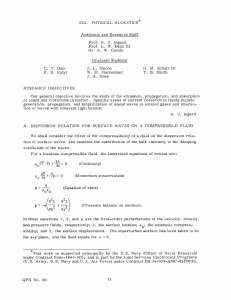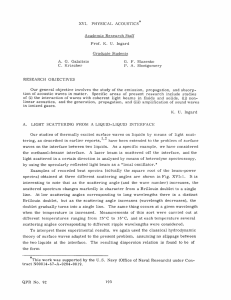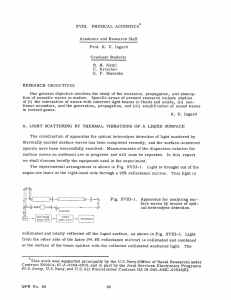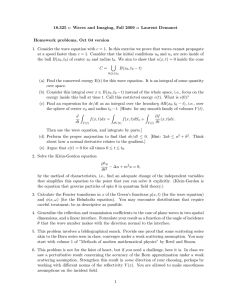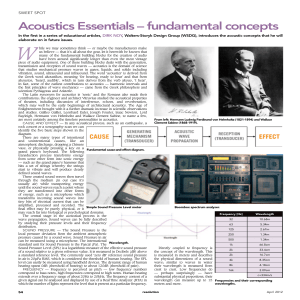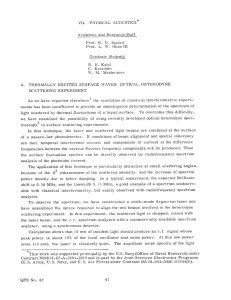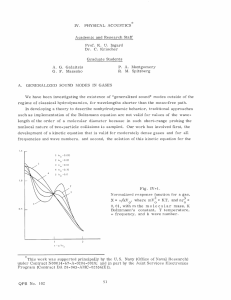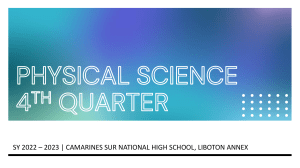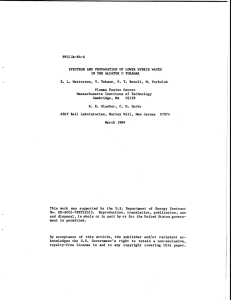Academic and Research Staff Graduate Students
advertisement
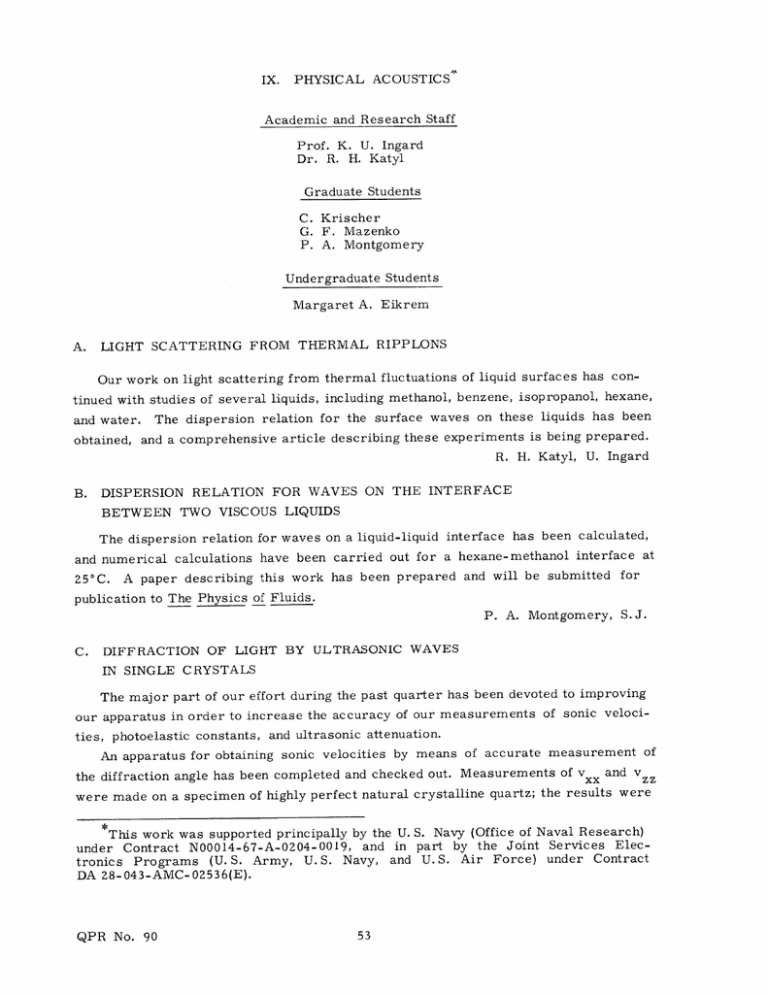
IX. PHYSICAL ACOUSTICS Academic and Research Staff Prof. K. U. Ingard Dr. R. H. Katyl Graduate Students C. Krischer G. F. Mazenko P. A. Montgomery Undergraduate Students Margaret A. Eikrem A. LIGHT SCATTERING FROM THERMAL RIPPLONS Our work on light scattering from thermal fluctuations of liquid surfaces has continued with studies of several liquids, including methanol, benzene, isopropanol, hexane, and water. The dispersion relation for the surface waves on these liquids has been obtained, and a comprehensive article describing these experiments is being prepared. R. H. Katyl, U. Ingard B. DISPERSION RELATION FOR WAVES ON THE INTERFACE BETWEEN TWO VISCOUS LIQUIDS The dispersion relation for waves on a liquid-liquid interface has been calculated, and numerical calculations have been carried out for a hexane-methanol interface at 25 C. A paper describing this work has been prepared and will be submitted for publication to The Physics of Fluids. P. A. Montgomery, S.J. C. DIFFRACTION OF LIGHT BY ULTRASONIC WAVES IN SINGLE CRYSTALS The major part of our effort during the past quarter has been devoted to improving our apparatus in order to increase the accuracy of our measurements of sonic velocities, photoelastic constants, and ultrasonic attenuation. An apparatus for obtaining sonic velocities by means of accurate measurement of the diffraction angle has been completed and checked out. Measurements of vxx and vzz were made on a specimen of highly perfect natural crystalline quartz; the results were This work was supported principally by the U. S. Navy (Office of Naval Research) under Contract N00014-67-A-0204-0019, and in part by the Joint Services Electronics Programs (U. S. Army, U. S. Navy, and U. S. Air Force) under Contract DA 28-043-AMC-02536(E). QPR No. 90 (IX. PHYSICAL ACOUSTICS) within 0. 1% of the values reported by McSkimin.1 The entire 4. 5 cm length of our crystal was probed but, as was to be expected, no variation in velocity could be detected in this highly perfect crystal. We attempted to measure photoelastic constants using a novel method: the ratio (pik/Pjk) can be obtained from the ellipsometric analysis of the elliptically polarized diffracted light pulses, if the incident light beam is polarized at 450 in the x.-x. plane. This method has a considerable advantage over the conventional measurement of the amplitudes of the diffracted light pulses; the accuracy is independent of variations in the acoustic beam or light beam intensity, and does not depend on the linearity of the detection system. Because of a noisy background level, attributable to the scattering of light by the crystal surface, overcome our accuracy was a very disappointing this difficulty, we built a solid-state significantly improve our signal-to-noise ratio. boxcar integrator 2 10%. To which should C. Krischer References 1. H. J. 2. W. G. Clark and A. L. Kerlin, Rev. Sci. Instr. 38, 1593 (1967). D. NONLINEAR ACOUSTICS McSkimin et al., J. Appl. Phys. 36, 1624 (1965). The frequency dependence of the absorption of nonlinear acoustic oscillators of the Helmholtz type has been computed for several values of the resonator parameters. A paper on this topic has been prepared and will be submitted to The Journal of the Acoustical Society of America. U. Ingard QPR No. 90
